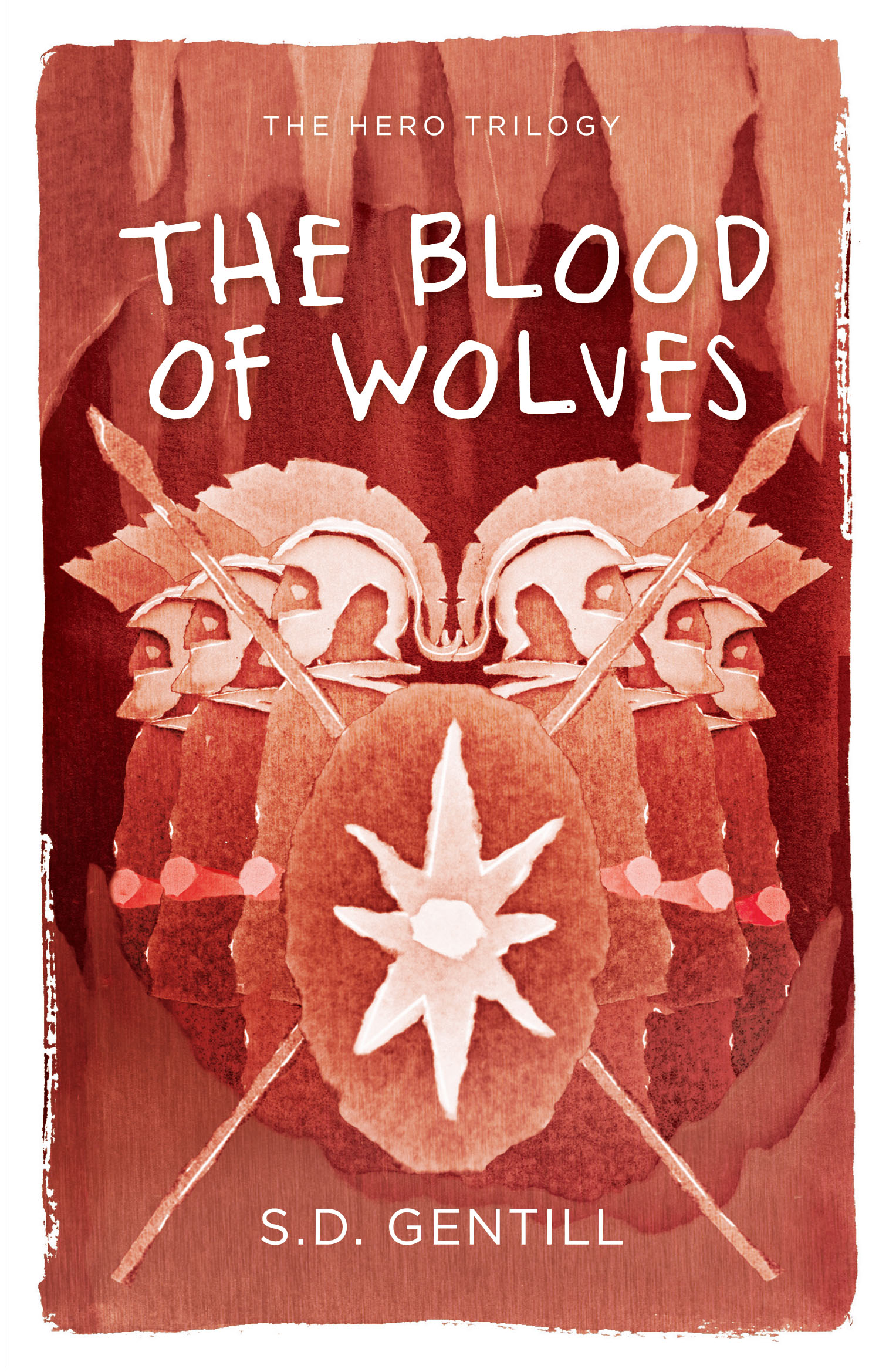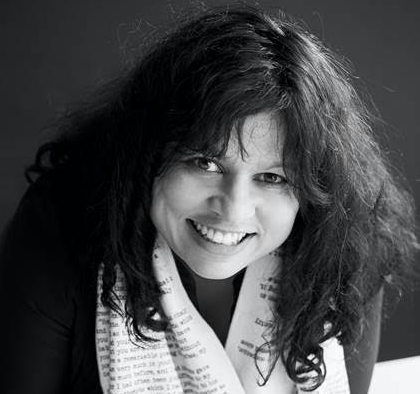Title of the work
Country of the First Edition
Country/countries of popularity
Original Language
First Edition Date
First Edition Details
Sulari D. Gentill, The Blood of Wolves (The Hero Trilogy, 3). Sydney: Pantera Press, 2013, 438 pp.
ISBN
Genre
Action and adventure fiction
Alternative histories (Fiction)
Mythological fiction
Myths
Novels
Target Audience
Young adults
Cover

Courtesy of Pantera Press.
Author of the Entry:
Anne Rogerson, University of Sydney, anne.rogerson@sydney.edu.au
Peer-reviewer of the Entry:
Elizabeth Hale, University of New England, ehale@une.edu.au
Lisa Maurice, Bar-Ilan University, lisa.maurice@biu.ac.il

Courtesy of Pantera Press.
Sulari Gentill
, b. 1971
(Author)
Sulari Gentill is an Australian author, who was born in Sri Lanka, learnt to speak English in Zambia and grew up in Brisbane. After entering university to study astrophysics, she took a degree in corporate law; she is now a full-time writer, and lives on a truffle farm in the foothills of the Snowy Mountains in New South Wales with her historian husband and two sons. She is the author of an award-winning crime fiction series set in the 1930s in Australia and overseas, featuring a gentlemanly artist amateur detective, Rowland Sinclair. Writing as S. D. Gentill, she has also produced a trilogy of mythologically-inspired adventure novels for young adult readers: the Hero Trilogy. In 2017 she published her first work of literary fiction, Crossing the Lines.
Bio prepared by Anne Rogerson, University of Sydney, anne.rogerson@sydney.edu.au
Summary
The Blood of Wolves finds the young Hero and her adopted brothers, Machaon, Lycon and Cadmus back on the slopes of Mt Ida. The arrival of one of the Trojan refugees who left with Aeneas after Troy’s fall soon sets them and their guardian wolf Lupa on another long journey. This time all the Herdsmen leave, as Pan warns that Ida will soon fall to its land-hungry neighbours. They go to find a new home for themselves and to help Aeneas, who they are told has been imprisoned on Crete; their adventures are intertwined with the events of Aeneid 3–12 as Gentill once more reworks ancient epic into her modern story. The Herdsmen arrive on Crete to find that Aeneas is building a new city, a prisoner only to madness (which is how his countryman has interpreted the alleged prophetic powers his leader now enjoys). The Trojan people are kept closely guarded and on short rations, and it soon becomes apparent that Aeneas – who insists upon being called Son of the Goddess – is both deranged and dangerous, while his followers have become a cult, easily whipped to a frenzied mob. Other familiar characters from the Aeneid are also seen in a new light – Iulus is a golden-haired, sympathetic, traumatised child; Euryalus has become a cold-eyed, murderous fanatic; Anchises is senile, endlessly reliving the past when he was desired by a goddess. The three brothers go looking for food and discover Crete’s labyrinth, in which they find the last of the Minotaurs (his death at Theseus’ hands an exaggeration). He tells them the true story of Theseus and Ariadne, and the curse that makes Crete utterly inhospitable. Meanwhile, Hero develops a crush on Aeneas who, like Theseus, appears unhealthily interested in her young charms. As an earthquake strikes, the Trojan prince suddenly and conveniently recalls a prophetic dream which excuses his abandonment of the settlement begun on Crete, and they all leave for Hesperia. The events of the novel continue to closely follow those of the Aeneid, and along the way – as in Chasing Odysseus – Gentill gives alternate explanations for what happens in the ancient epic. It is Scamandrios’ fear of Aeneas’ ambitions, for example, that leads him to “predict” an onward journey for the Trojans; Hero’s account of how she and her brothers visited the Underworld and met the shade of their father appears to inspire Aeneas’ suspiciously similar tale of his own alleged encounter with Anchises in the Underworld.
While Aeneas’ story unfolds, that of Hero and her siblings does not stand still and issues left unresolved in the previous two novels are brought back into play. In Carthage, they meet Nausicaa, who helped them to finesse the truth from Odysseus in the first book. Captured after the destruction of Scherie which sank like Atlantis beneath the waves of Poseidon’s anger, she is now enslaved and has been sold to one of Dido’s chief generals, and brutally raped; Machaon, who loves her, fights in single combat to prove her claim to freedom. He kills Dido’s general, fuelled by animal rage, and is offered the position of leader of her forces in the dead Carthaginian’s place, a position from which he is saved only by Dido’s untimely death. In Sicily, they encounter Ares’ daughter Alcippe whom they left to bring lawful peace to Athens in the second novel; she and Cadmus, like Machaon and Nausicaa, can now marry and realise their love for each other.
Hero’s love story does not go so smoothly, as Aeneas is revealed as, in her own words, “a duplicitous, immoral, lying viper”; he toys with her affections and Anna’s, and Gentill’s treatment of Dido’s death suggests strongly that his callousness towards women is directly responsible for an even more shocking deed than suicide. Aeneas’ conduct in Italy also throws doubt upon the nobility of his character, as in Gentill’s retelling he deliberately fosters the strife that leads to war with the Italian people; he also cruelly rebuffs his son Iulus, who has been befriended by the Herdsmen and proves himself a much more attractive character and better leader than his father. Finally, Gentill takes Aeneas’ story beyond the end of the Aeneid, explaining how Hero killed him, how the body was buried, and how a story was concocted to allow Aeneas’ son to rule the Trojans. At the end of the novel, the Herdsmen sail on, leaving Italy behind. An epilogue shows us Romulus and Remus, suckled by an ancient she-wolf. Is it Lupa? Gentill’s series goes no further.
Analysis
The Blood of Wolves and the Hero Trilogy to which it belongs use the possibilities offered by inserting teenage characters into the iconic myths of ancient Greece and Rome to advance a new perspective on these well-known stories and their heroes. The three novels reflect early twenty-first century suspicions of powerful men and the stories they tell, and foreground the voices of those who are traditionally voiceless and powerless (children, women, the defeated and displaced). In this novel the battered body and shaved head of Nausicaa, as well as the ongoing and growing concern of Hero’s brothers about her vulnerability, further heighten the anxieties already seen in Trying War concerning the consequences of heroism for the women of the ancient mythical world. At the same time, Aeneas, the epic hero on whom this novel focuses, is shown to be not only boastful and untrustworthy (like Odysseus in Chasing Odysseus), and dangerously rapacious (like Theseus in Trying War), but also wicked, utterly heartless and unscrupulous to the point of madness. Gentill’s revelation of the character flaws of the heroes of ancient myth takes on a decidedly dark edge in this final book in the trilogy. Her criticism of how ancient epic often justifies the actions of its heroes also becomes more pointed, and throughout the novel the powers of prophecy are mocked and questioned. The introduction of a doggedly rational Greek atheist called Sirius, Patroclus’ brother, as Hero’s love interest embodies the vein of scepticism that runs through the series and emerges most strongly in this book. Sirius is also Hero’s reward and by the novel’s close all four siblings enjoy or are promised fulfilling relationships that give happy endings to Gentill’s true heroes, the irreverent, humorous, intelligent and compassionate supporters and protectors of those victimised by the brawny, violent and arrogant supermen of ancient epic.
Further Reading
Lovatt, Caroline, Helen Lovatt and Jonathan Lovatt, “Inheriting the Past: Children’s Voices and Parenting Experiences”, in Helen Lovatt and Owen Hodkinson, eds., Classical Reception and Children's Literature: Greece, Rome and Childhood Transformation, London and New York: I. B. Tauris, 2018, 272–287.
Rogerson, Anne, “Displaced Persons and Displaced Narratives in S. D. Gentill’s Hero Trilogy”, in Marguerite Johnson, ed., Antipodean Antiquities: Classical Reception Down Under, London: Bloomsbury Academic, 2019, 167–176.


